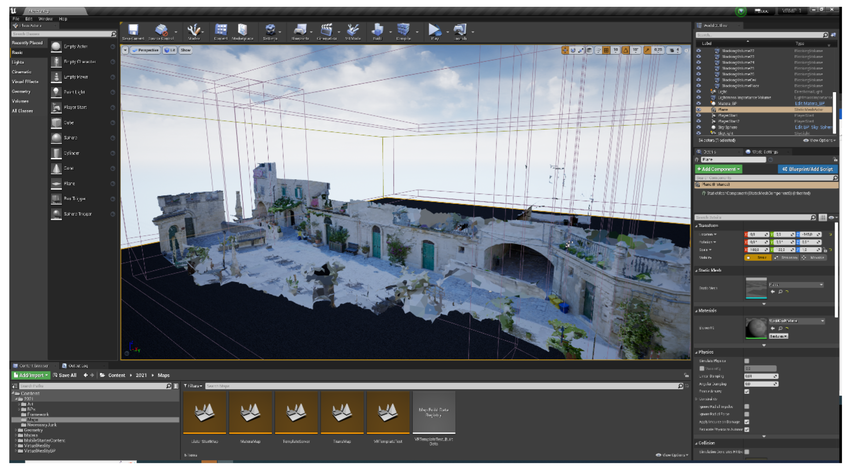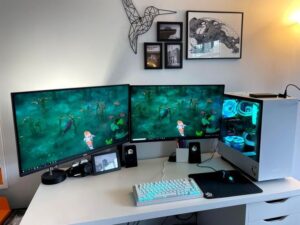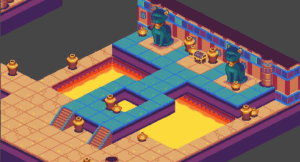The Engine Shift: A New Era in Game Development
In the dynamic and fiercely competitive world of the Gaming Industry, the foundational technology upon which a game is built—its engine—is one of the most critical decisions a studio can make. For decades, a debate has raged: build a bespoke, proprietary engine tailored to a specific vision, or license a powerful, off-the-shelf commercial engine like Unreal Engine or Unity? While proprietary engines have powered some of the most iconic titles in Gaming History, a significant trend is emerging. Increasingly, even highly successful studios with established in-house technology are making the strategic leap to commercial engines for their next-generation projects. This isn’t just a minor technical adjustment; it’s a fundamental shift in development philosophy, driven by the escalating demands for visual fidelity, development speed, and talent acquisition. This article delves into the complex technical, creative, and business rationale behind this engine shift, exploring why building from the ground up is no longer the default choice for studios aiming to create the next blockbuster AAA Games.
The Engine Dilemma: Proprietary vs. Commercial Platforms
The choice of a game engine dictates everything from a game’s visual potential and performance to its development timeline and budget. Understanding the core differences between proprietary and commercial solutions is key to appreciating why a studio would undertake the monumental task of switching.
The Case for Customization: Proprietary Engines
A proprietary engine is a studio’s secret sauce, built in-house from the ground up. This approach offers the ultimate level of control and customization. If a studio is creating a complex Strategy Game with unique destruction physics or an RPG Game with a novel procedural generation system, a custom engine can be built to do exactly that, and nothing more. This can lead to highly optimized performance on target Gaming Hardware, as there’s no code bloat from features the game doesn’t need. Studios like Naughty Dog (Naughty Dog Game Engine) and Guerrilla Games (Decima Engine) have used proprietary tech to push boundaries and create signature experiences. However, this power comes at a tremendous cost. The initial investment in time, money, and engineering talent is immense. Furthermore, the studio is solely responsible for maintaining and updating the engine to support new platforms, APIs, and technologies like those found in the latest Graphics Cards—a never-ending and expensive task.
The Power of the Platform: Commercial Engines
Commercial engines like Unreal Engine and Unity represent a different philosophy. They are robust, feature-rich platforms designed to cater to a wide variety of genres, from fast-paced FPS Games to sprawling open worlds. The primary advantage is speed and accessibility. A studio can start prototyping a game on day one without first spending years building the foundational tools. These engines come packed with advanced rendering systems, physics simulators, animation tools, and visual scripting languages (like Unreal’s Blueprints) that empower designers and artists. The support ecosystem is another massive benefit. A vast global Gaming Community, extensive documentation, and thriving asset marketplaces (as seen in the latest Epic Games News) provide solutions to common problems, saving countless development hours. While this comes with licensing fees or revenue-sharing agreements, for many, the trade-off is well worth the accelerated development cycle and reduced technical risk.
The Technical and Creative Rationale for a Major Engine Upgrade

When a studio decides to migrate to a commercial engine like Unreal Engine, the decision is often driven by a desire to leverage cutting-edge technology without having to build it themselves. This allows them to focus their resources on what truly makes their game special: the gameplay and art.
Chasing Photorealism and Next-Gen Visuals
Modern player expectations, especially in the PC Gaming and Console Gaming spaces, are incredibly high. Delivering state-of-the-art graphics is a baseline requirement for many AAA Games. Unreal Engine 5, for instance, introduced groundbreaking features like Nanite and Lumen. Nanite allows developers to use film-quality, high-polygon assets directly in-game without the traditional performance cost, enabling unprecedented levels of geometric detail. Lumen provides fully dynamic global illumination, meaning lighting and reflections react instantly to changes in the scene. Replicating this technology in-house would require a world-class team of rendering engineers and years of R&D. By adopting Unreal, a studio gains immediate access to these tools, allowing their art teams to create breathtaking worlds that can push the latest Gaming PCs and consoles to their limits.
Accelerating Development with Advanced Toolsets
Modern Game Development is about rapid iteration. The faster a team can test an idea, the better the final product will be. Commercial engines excel in this area. Unreal Engine’s Blueprints Visual Scripting system, for example, allows game designers to implement complex logic—from character abilities in a MOBA Game to quest systems in an MMORPG—without writing a single line of C++. This democratizes the development process, freeing up programmers to tackle more complex systems like networking for a co-op or Battle Royale experience. The integrated toolsets for animation, cinematics (like Sequencer), and world-building (procedural foliage, landscape tools) create a cohesive and efficient pipeline, drastically reducing the time it takes to go from concept to a playable build.
Cross-Platform Development Made Simpler
The modern gaming market is fragmented across numerous platforms: PlayStation, Xbox, Nintendo Switch, PC (via Steam or the Epic Games Store), and even Mobile Gaming. Maintaining a proprietary engine that runs optimally on each of these platforms is a logistical nightmare. Commercial engines handle the vast majority of this heavy lifting. They provide tested and optimized build pipelines for all major platforms, managing the subtle but crucial differences in their hardware and software environments. This massively de-risks the porting process and ensures a studio can reach the widest possible audience with its next major Game Release without tripling its engineering headcount.
Beyond the Code: Business and Talent Implications
The decision to switch engines reverberates far beyond the engineering department, impacting hiring, project management, and a studio’s long-term business strategy.
The Talent Pipeline and Hiring Advantage
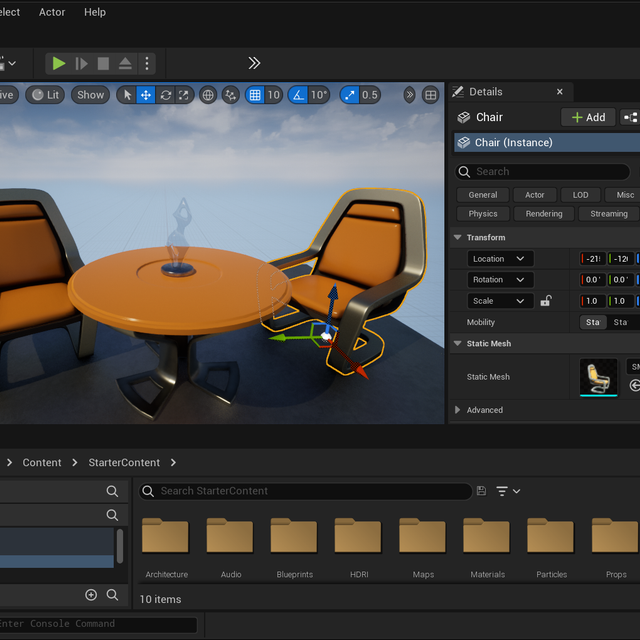
One of the most significant, yet often overlooked, advantages of using a popular commercial engine is access to talent. Universities and online courses extensively teach Unreal Engine and Unity, creating a large global pool of developers, artists, and designers who are already proficient with the tools. When a studio uses a proprietary engine, every new hire must be trained from scratch on their unique, undocumented systems—a process that can take months. By switching to Unreal, a studio can tap into a ready-made talent pipeline, reducing recruitment costs and allowing teams to scale up quickly for ambitious projects. This is a critical competitive advantage in the fast-moving world of Game Design.
De-Risking Future Projects and Focusing on Innovation
Tying a studio’s future to a proprietary engine is a significant risk. The engine’s advancement is entirely dependent on the studio’s own resources and the retention of its key engineers. If that core team leaves, the technology can stagnate, putting future projects in jeopardy. By contrast, Epic Games employs hundreds of the world’s best engineers dedicated solely to advancing Unreal Engine. They are constantly pushing the envelope in areas from VR Gaming and AR Gaming to Cloud Gaming and real-time film production. By licensing their engine, a studio effectively outsources this massive R&D effort, future-proofing their technical pipeline and allowing their own top talent to focus on creating innovative gameplay systems that define their brand.
Navigating the Engine Shift: Best Practices and Pitfalls
Migrating to a new engine is a complex and challenging endeavor. A successful transition requires careful planning, investment in training, and a willingness to adapt old workflows.
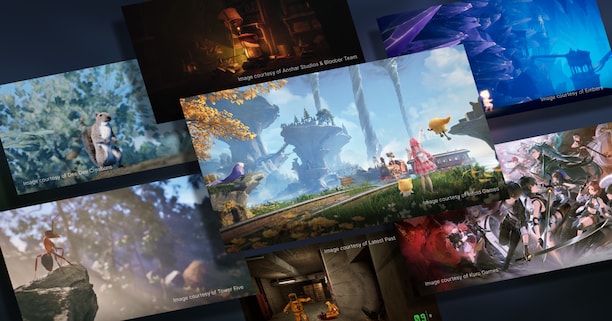
Best Practices for a Smooth Transition
Studios that successfully navigate this shift typically follow a clear strategy. First, they invest heavily in prototyping, building small, focused projects to understand the new engine’s strengths and weaknesses. Second, comprehensive training for the entire team is non-negotiable; this includes artists, designers, and programmers. It’s crucial to embrace the “Unreal way” or the “Unity way” of doing things rather than fighting the engine. Finally, the asset and content pipelines must be completely rebuilt. How models are created, textures are authored, and levels are assembled will be fundamentally different, and this new workflow must be established early in pre-production.
Common Pitfalls to Avoid
The most common pitfall is underestimating the learning curve. Even senior developers who are experts in a proprietary C++ engine will face challenges adapting to a new framework’s architecture and APIs. Another major mistake is trying to force old habits onto the new toolset. This often leads to inefficient, unmaintainable, and buggy results. For instance, trying to replicate a custom scripting system inside Unreal instead of embracing Blueprints or its C++ framework is a recipe for disaster. Constant performance profiling on target hardware, from high-end Gaming Laptops to base-model consoles, is also critical, as optimization strategies that worked in the old engine may be completely irrelevant in the new one.
The Future is Built on Powerful Foundations
The growing trend of established studios moving from proprietary technology to commercial engines like Unreal Engine marks a pivotal moment in the Gaming Industry. This strategic shift is not an admission of failure but a calculated business decision to leverage world-class technology, accelerate development, and win the war for talent. While the allure of a perfectly tailored proprietary engine will always exist for some, the immense power, flexibility, and ecosystem of modern commercial engines present an undeniable advantage. By offloading the monumental task of building and maintaining a cutting-edge engine, studios can dedicate their full creative energy to what matters most: crafting the unforgettable gameplay experiences that define the future of Video Games and captivate the global Gaming Community.





